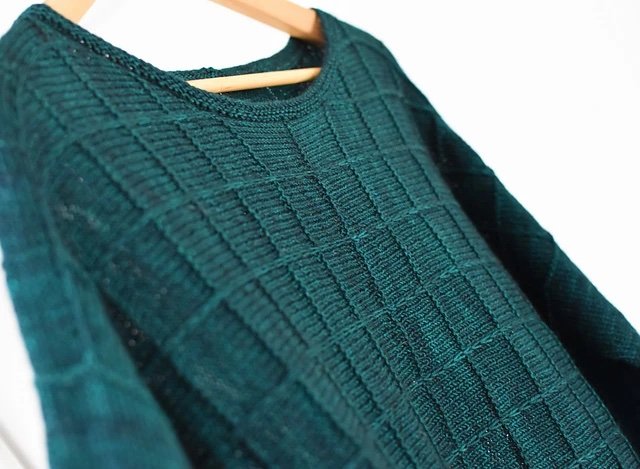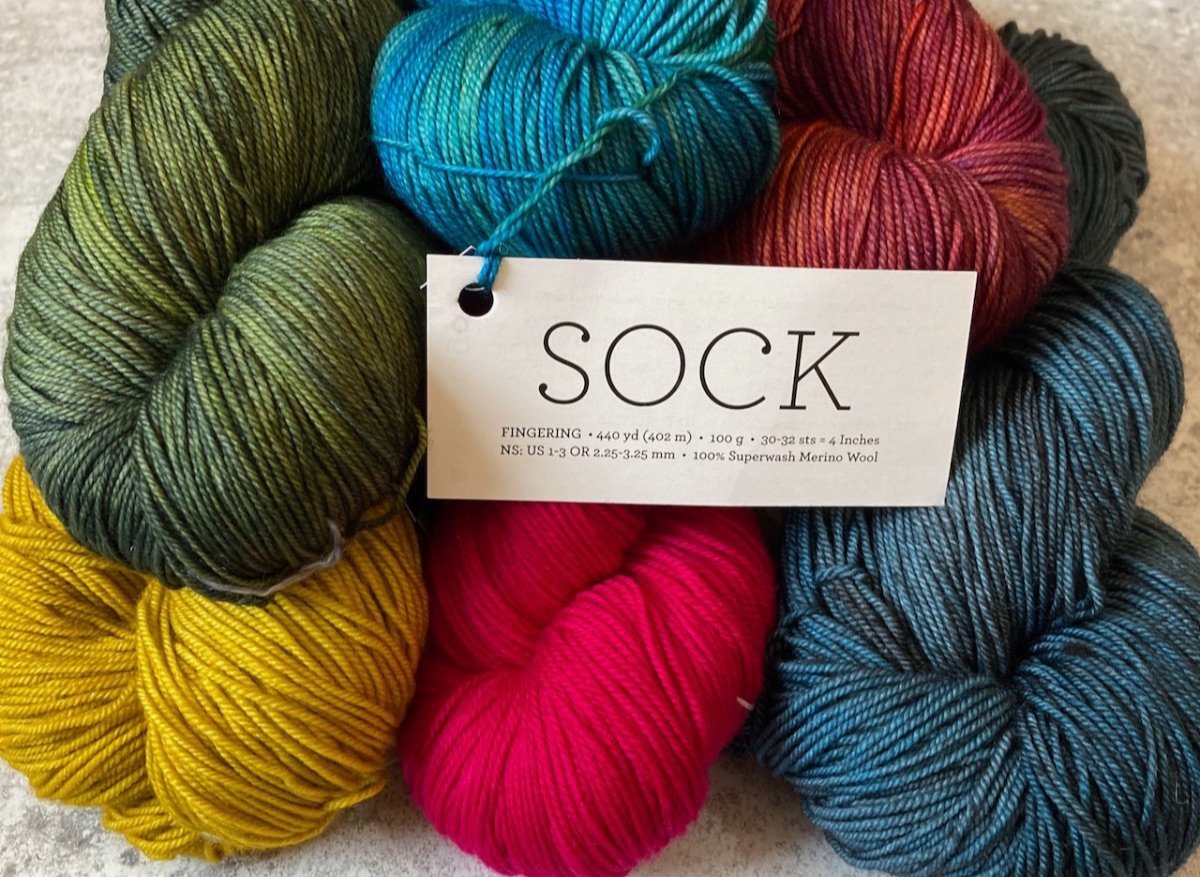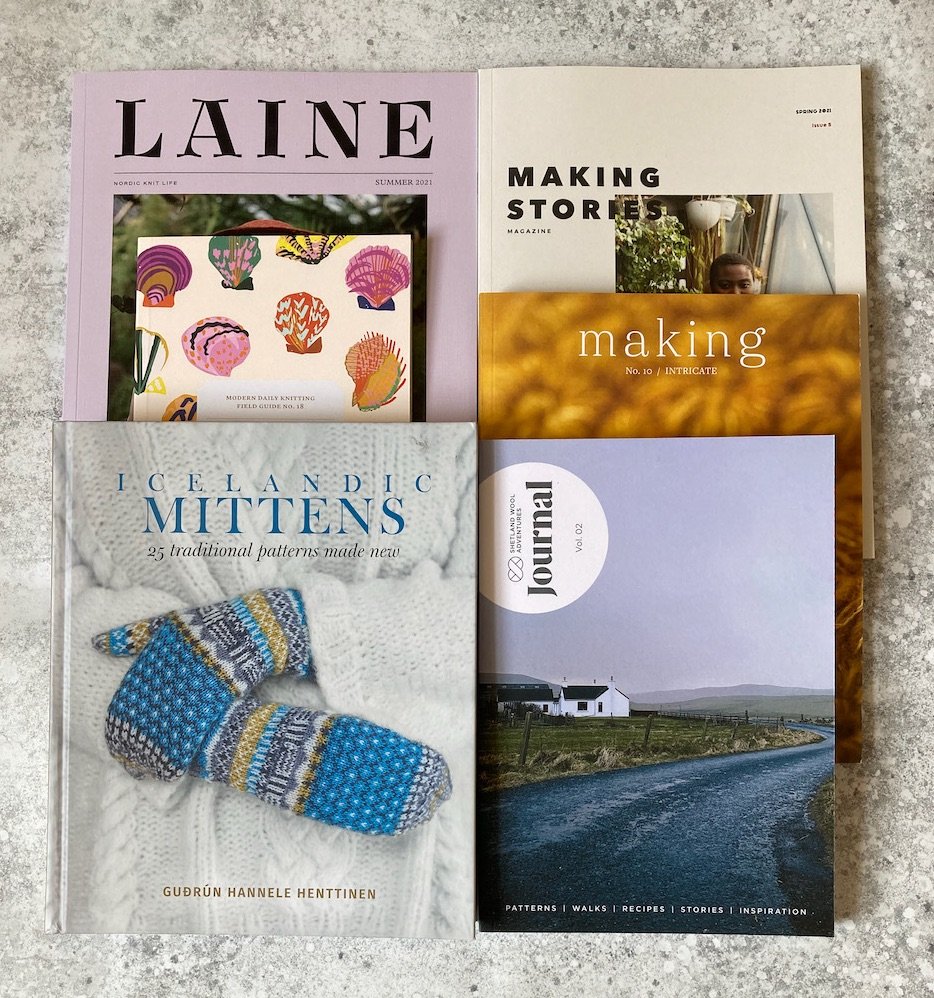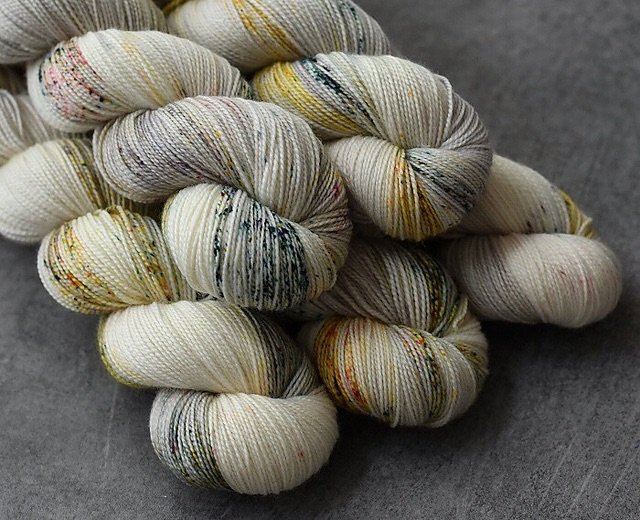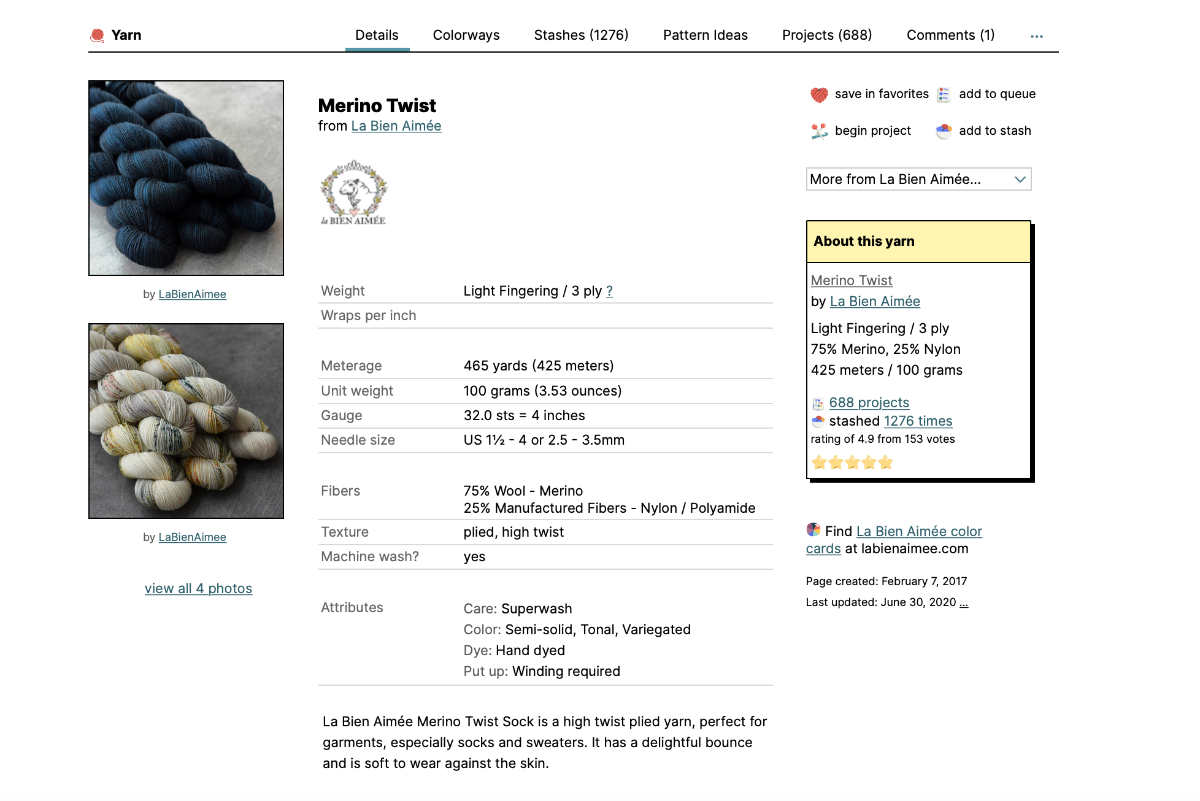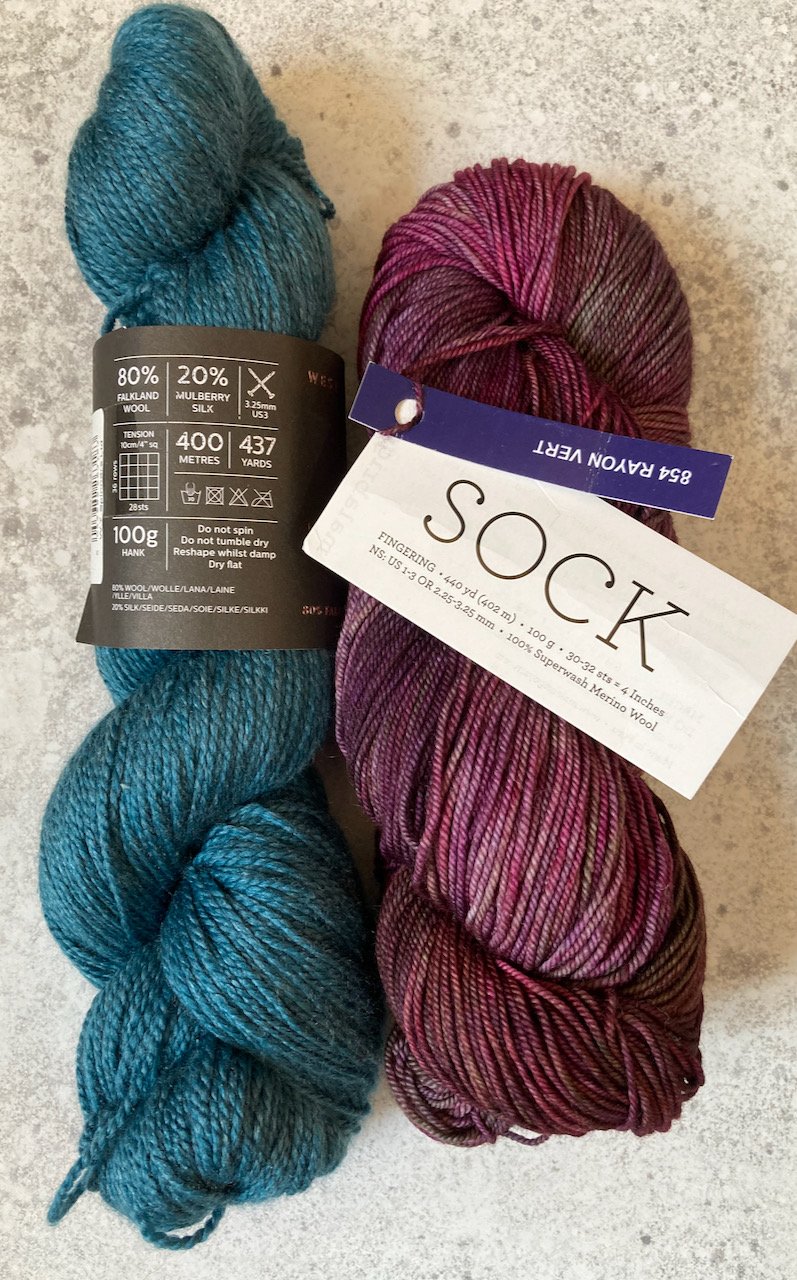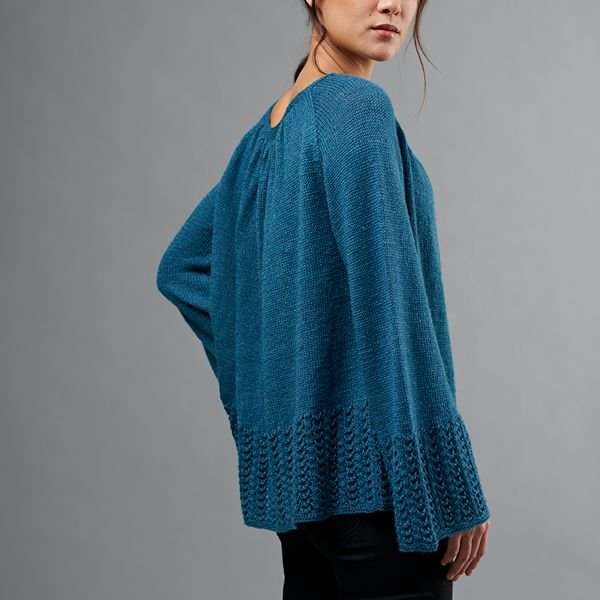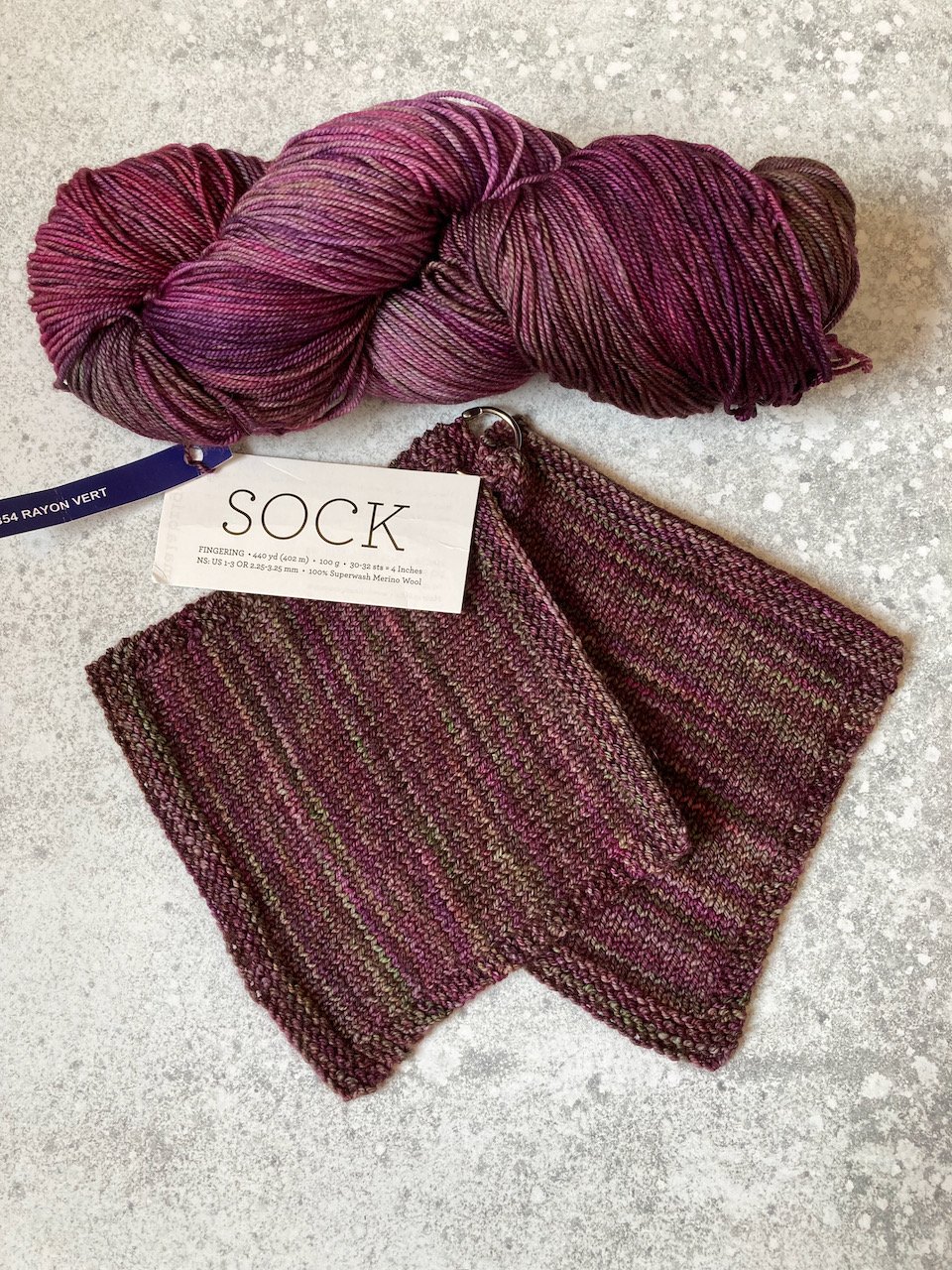Yarn Substitution
This post focusses on a topic that I know challenges a lot of knitters. Judging by the number of requests I get asking for help in choosing substitute yarns, I thought you would appreciate some ideas on how to go about making successful substitutions. This is such a huge topic that I can only really scratch the surface here but I will finish with a couple of links to other places where advice is available if you want to pursue aspects of this further. This is my personal approach to the job of selecting substitute yarns. Other approaches are available...
Deciding which yarn to use for a project can be part of the fun, but it can also be quite anxiety-provoking when you are all too aware of the impact your choice is going to have on the end result. With designs available to us in print, and via download, from designers all over the world, it is unsurprising, perhaps, that the original yarn used by the designer is rarely available to us from our usual suppliers, leaving us with the knotty challenge of what will give us the desired result ... and what won't.
I know from bitter experience how disappointing it can be when the jumper we have spent weeks or months knitting as carefully as we can just doesn't work out the way it was meant to, not because of our knitting ability but because we have chosen the wrong yarn for the job. So how do we avoid this pitfall?
In all that follows, I am assuming that you are trying to choose a yarn that will give very similar results to the designer's original yarn choice. There is nothing stopping an adventurous knitter going off piste and deliberately choosing a yarn that will create a very different sort of garment, but that is not what I am discussing here.
Given that, I think the place to start is by examining the pattern in detail. Take some time to think about the design and identify which style elements attracted you to it in the first place. Which characteristics do you want to keep and which might you want to alter or downplay?
Look at the photography and think about the nature and purpose of the garment. What can you tell about the stitch definition, drape, texture and colour of the fabric shown?
Is it a heavy, durable, outdoorsy sort of a garment or light and elegant? Is the surface smooth and crisp, or soft and blurry with a pronounced halo? Is its impact dependent on textured patterns or cables? Is there colour work involved? Are the colours solid, semi-solid or space-dyed and is this a key design element?
Once you are clear about what factors you consider essential to the success of the design, you can turn your attention to the original yarn. Most of the time, this yarn will be outside your personal experience and very possibly something you have never even heard of. It is essential to do some research into the characteristics of this yarn if you are to find a really good substitute, as success in replicating the original design is likely to depend on matching the characteristics of the yarn in as many respects as possible.
To illustrate the research process, I'm going to take as a straightforward example the Gridlines Sweater by Susanne Sommer shown below. The details at the start of the pattern are also shown below:
When researching the original yarn you can try googling it, or take a look at reviews of this yarn on Ravelry, if you are ok with using this site. If possible find the website for the producer of the yarn and take a look at the pictures as well as any available data. Yarn producers are getting better at providing detailed information about their yarns but this part of the task can be frustrating at times. Perhaps this is in part about producers protecting trade secrets but I suspect much of it is them simply not realising that knitters actually want to know this stuff!
It wasn't hard to find some data on the original yarn in this instance as there was enough on Ravelry to help me out with the details I needed to establish.
When I'm checking out a yarn I'm looking for the following hard data:
meterage per 100g
recommended needle size
gauge on this needle size
is it worsted or woollen spun?
how many plies it has
fibre content
I'm also going to be examining the pictures to see if I can tell anything about:
how tightly those plies are twisted together (twists per inch)
whether the surface of the yarn is smooth or fluffy
how it has been dyed (solid / semi-solid / space dyed)
From the available data I can get most of this. I can't tell how many plies there are but it is definitely plied, not single, and has a high number of twists per inch. I can see it is smooth and space dyed. From the look of it, it is going to be worsted spun although that fact is missing from the data. So, I have a fair idea now of what I am looking for as a substitute.
If you are still with me at this point, and not heading out to find a new hobby, we can start the process of choosing the substitute yarn.
Let's start with yarn length. When substituting yarns, you need to match the total meterage of the original yarn, not the weight. Yarns within the same weight category (such as DK or 4ply) can vary greatly in meterage meaning weight is not much help in judging total quantities required. These 4ply yarns on the left are all 100g skeins but vary significantly in meterage from 450m, to 350m to 325m to 306m.
Large differences in meterage between yarns that have been categorised as the same thickness may result from
differences in the spinning process, number of plies, or fibre content but I haven't been able to find a consistent pattern explaining the variations. So it may simply be because different mills have different interpretations of how thick that particular yarn weight can be. But whatever the reason for them, a big difference in meterage between the original yarn and the one you want to use doesn't just mean a bit of maths to get the right total quantity of yarn for your project; it could also mean that you are going to have a hard time getting gauge.
And if the garment is to fit, you need to get gauge, whether that is on the recommended needle size or by changing needle sizes. So the yarn you choose needs to offer you a similar recommended needle size and gauge to the original. Small variations are inevitable and neither of these yarns under consideration on the right (WYS Exquisite 4ply and Malabrigo Sock) were spot on but they were close.
But if the gauge stated on the ball band is too significantly different from the gauge of the original yarn, you could be making life difficult for yourself. Moving down or up multiple needle sizes to try to force the yarn to get gauge is to risk creating a fabric that is either too dense and stiff to be beautiful or comfortable, or too open to hold its shape or do its job.
There are many other things that could be considered when it comes to replicating the desirable characteristics of a design. These could include machine-washability and durability, if the garment is for a child, or elasticity if the project needs to fit snugly, but I'm going to confine myself to stitch definition, drape, warmth and colour:
Stitch definition:
Smoother yarns spun with more twists per inch generally give better stitch definition but here we also need to consider the data we have gathered about plies. Knitting terminology can be confusing at times, not least when the word ply crops up. It can be used to describe the overall thickness of a yarn but here I am talking about construction – how many strands of fibre have been twisted, or plied, together to make the final yarn.
Yarns are readily available made up of 1, 2, 3, 4 or even more plies. You can easily assess the number of plies by teasing apart the end of the yarn.
On the left is a photo of yarns I have had in the shop, all of which are classed as 4ply, but you can see that they are constructed from a variable number of strands – anything from 1 strand at the top to 4 strands at the bottom.
Generally speaking, the greater the number of plies, the rounder the yarn will be in cross section and the better the stitch definition. So if the original yarn for your chosen project was a 3 ply construction, and the garment you want to make has a lot of textured stitches that you want to be able to see clearly, then using a single ply yarn, which is fairly flat in cross section, or even a 2 ply yarn that is more oval in cross section, is going to give less clear stitch definition than a 3ply yarn that is round in cross section.
You may be able to tell from a photograph of a skein of yarn if it is single ply or not. Distinguishing between yarns constructed with 2 or 3 plies may be more difficult without actually seeing the yarn itself but if in doubt go for more plies rather than fewer to achieve good stitch definition.
Drape:
If you know from your research that the original yarn is smooth and silky looking, and the photographs of the finished garment show a lot of drape, then you are probably looking at a yarn that has been worsted spun (like this Khloe Bell Shape Lace Top below left by Chloe Birch in WYS Exquisite 4ply). Here's another confusing bit of terminology; 'worsted' can be used to describe a yarn weight somewhere between DK and Aran but it is also a type of spinning process and that is what I am talking about here.
In essence, the fibres in worsted spun yarn have been combed into alignment during processing making the yarn denser and smoother. Worsted spun yarns will generally give a better drape than woollen spun yarns.
Fibre content also comes in here. Wool yarns that use fibres from long wool breeds such as Bluefaced Leicester and Wensleydale will generally have a better drape than yarns spun from shorter staple breeds like Shetland. The addition of silk or alpaca will also generally enhance drape, although whilst silk will add lustre, alpaca is more likely to add a bit of halo (surface fluffiness).
Warmth:
If the original yarn looks bouncy, airy and not so smooth, and the garment has a warm, woolly, and frankly more rustic look, then the yarn may be woollen spun (like this Blea Rock Sweater above right in Fibre Co Lore. In woollen spun yarns, the fibres have been left lying in all directions during processing, which traps more air and makes the yarn lighter and bouncier with a slightly less smooth surface. Garments knitted from woollen spun yarns are generally warmer than those produced from worsted spun yarns because they hold more air within the fabric. Woollen spun yarns are also 'stickier', i.e. the fibres cling to each other, making them ideal for stranded colour work and much easier to use in this way than silkier worsted spun yarns.
Colour:
This is largely personal choice but if the original yarn is semi-solid or space-dyed, ask yourself whether this fact is key to the success of the design. If the yarn you are considering only comes in solid, flat colours, will it still work? If the original design is worked in a light colour, will you still see the key features if you choose a dark shade? Will a complex design worked in a dark shade on a winter evening drive you mad?
In the end, I chose Malabrigo Sock for my Gridlines sweater (above). It fitted the brief because I was able to get gauge by going up just one needle size and because it is a worsted spun, smooth, merino yarn with a 3ply construction, a high twist and similar meterage to the designer's original choice. It also has some space-dyed variation to the colour which I liked.
With so many factors to consider, I hope the need to swatch for gauge and fabric character (for each needle size under consideration) will now seem like a no brainer. Be prepared to risk a ball or skein for this purpose; make your swatches good and big (at least a 2cm all round the 10x10cm you are going to measure); block them before measuring and assessing them; and take your swatch requirements into account when calculating how much yarn you need to get. It is a lot of preparation to do, but then a garment is a huge time investment, as well as a significant financial outlay. The rewards of knitting your own clothes can be great, but so can the disappointments be if it doesn't work out!
I hope that's been helpful and not put you off for life. I'm always happy to help with yarn choices and have swatches in the shop for many of the yarns I stock. As they are only a reflection of my tension, not yours, they won't get you out of making your own swatches but will at least give you some idea of the fabric the yarns are capable of producing.
For more help and other views on this issue (and others) take a look at the following sites:
Arnall-Culliford Knitwear tutorials
Modern Daily Knitting How To section
Happy Knitting
Judith

